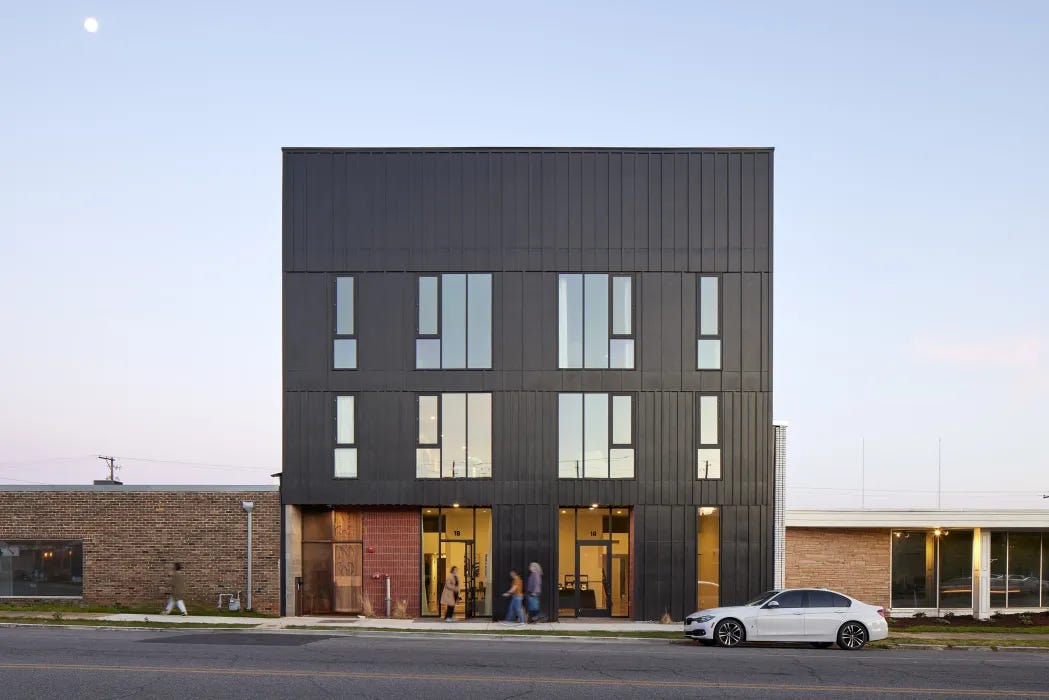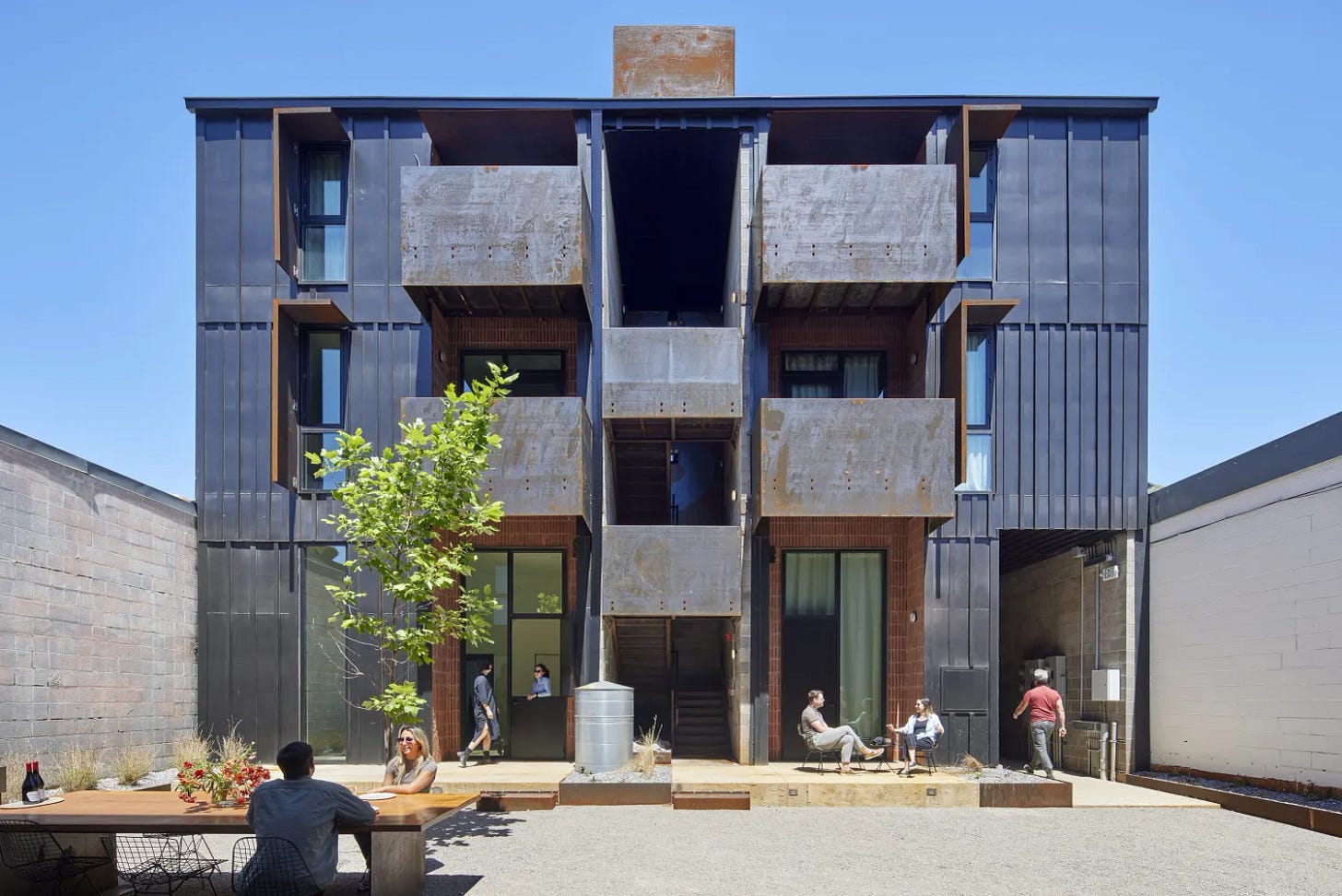
Marks of Making is a monthly interview series that explores the care, process, and the people behind creative and craft work. This month’s guest isMichael Lewandowski, associate architect at David Baker Architects.
David Baker Architects was founded in 1982 in San Francisco. It is known primarily for designing affordable housing projects, hotels, and condominium lofts, and I was happy to find out that its presence in Alabama is the result of the return of an Alabamian, Amanda Loper.
"Amanda Loper, the principal here in Birmingham, was working for David Baker in San Francisco when she and her family decided they needed more space," says Michael. "San Francisco didn’t feel like the right fit anymore, so they moved to Birmingham. David told her, 'Why don’t you start our second office there?'"
What began as a satellite office quickly became a second headquarters, and a place where their national standards met particular challenges. It turns out that both the climate and the budgets look a lot different here than they do in San Francisco.
Michael explained that "To deliver good architecture in affordable markets in the Southeast requires a totally different attitude,". "You have to be scrappy. You have to work with what you have." "The more limitations you put on a design, the more it takes shape."
It became clear that these challenges, much like the challenges we face with creating a brand, are an invitation. It’s a theme that runs throughout the work. With every tax credit program or zoning quirk comes an invitation to be creative. The goal is to build something that belongs, that is holistic and meaningful to the people that interact with it in its context.
Marks of Making is a monthly interview series that explores the care, process, and the people behind creative and craft work. To read more stories like this one consider becoming a free or paid subscriber.
Most projects live or die based on their process. The creative work has to have the support to thrive, so I was curious about the processes at David Baker Architecture. Michael explained that the firm had been asked a similar question by the Cooper Hewitt Design Museum about featuring a project in an exhibit that showed their process, the team paused. With hundreds of completed works, how could they pick just one?
Their answer came in the form of a guide: Nine Ways to Build Housing for People. It is a comic book-like manual of their process and values. "Weave the urban fabric" is one of those ways. Another: “Pay attention to place.”

"We rarely build somewhere devoid of context," he says. "We’re urban architects. The first step is always understanding the site within the city."
That ethos shows up everywhere: in the orientation of a porch or in the choice to hold a street corner instead of leaving it to asphalt and absence. We talked about how in a place like Birmingham, creating work with that level of attention to their craft can have greater impact.

Image Credit - Chris Luker
"Every move makes a pretty big wake here,". And DBA has made several. Some are literal cornerstones, like Jeni’s Ice Cream pavilion at Pepper Place. It anchors the street corner of Pepper Place through the week, bringing people to a corner that would have been another few parking spaces. Another signature DBA project in Birmingham is the striking black condos with shed roofs and rusted balconies on 2nd Ave South.
"It’s just 50 feet wide," he says. "But you can do a lot with 50 feet."



The building includes live-work units on the ground floor that are currently rented as short-term rentals. But the hope is that over time, commerce will return to that sliver of street. "You need a dozen projects like this, strung together, to rebuild a block."
These aren’t massive projects, but they’re what DBA calls "small but mighty acts of urbanism". Projects that turn "missing teeth in the grid" into connective tissue. Projects that ask: what if a door handle, a porch, or 50ft of a city block could change the way people interact with spaces.
"Good design is 99% invisible," he says, nodding to the Roman Mars podcast. "It’s like a door handle. You don’t notice it when it works. But when it doesn’t, you feel stupid. That’s not your fault. That’s bad design."
It takes more than a high level of skill and attention to detail to create good design. It takes people who don’t lose sight of the individuals who interact with that work day-to-day. That is what will make an interaction better, a space better, or a product better. That is what I learned is behind the heart of DBA’s work in the southeast — they care about the mark their work will leave on the people who will inherit it.
.png)